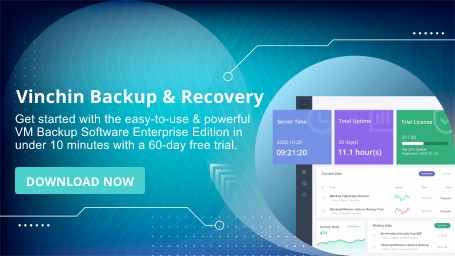-
What is Amazon EFS?
-
Benefits and Features of Amazon EFS
-
How to Create and Mount a File System?
-
Backup EC2 instance with Vinchin Backup & Recovery
-
AWS EFS FAQs
-
Conclusion
Have you used Amazon EFS? Its main purpose is to enable you to build a cloud-based network file system for Linux-based application workloads and programs. Since EFS’s structure and functionality are similar to local infrastructure, you can easily transfer a variety of existing files.
What is Amazon EFS?
Amazon EFS is a cloud-native data storage service that provides simple, scalable shared file storage for Linux-based business applications. It can scale up to petabytes while delivering consistent low-latency data access and high throughput. It is fully managed, so you don't have to worry about continuous maintenance of Amazon EFS. It is easy to set up. simply use the AWS Management Console, API, or command-line interface to create a file system and securely make it available to one or more Amazon EC2 instances in your Amazon VPC. Then mount your file system to store and access data. You can also use AWS Direct Connect or AWS VPN to mount on-premises servers to EFS, easily migrating data to EFS to enable cloud bursting or back up on-premises data to EFS.
EFS file systems are elastic and automatically grow and shrink as you add or remove files. You can choose between two performance modes to customize file system performance according to application needs. Throughput scales automatically with capacity. For workloads requiring high throughput but low capacity, throughput can be configured independently of capacity, though this is less frequent. You can also configure EFS to store data in the cost-optimized Infrequent Access storage class.
Amazon EFS works with the tools and applications you already use. It is designed for high availability and durability, allowing you to store redundant data across multiple Availability Zones. You can always have the capacity you need when you need it, without provisioning storage in advance.
You pay only for what you use—no minimum fees or setup costs—and it eliminates storage management tasks.
In short, summarized: Amazon Elastic File System (Amazon EFS) provides a simple, scalable, fully managed elastic NFS file system that can be used with AWS cloud services and on-premises resources. It can scale on demand to petabytes without disrupting applications and automatically scales or shrinks as you add or delete files, allowing you to adapt to file system growth without provisioning or managing capacity. Amazon EFS is designed to provide massively parallel shared access to thousands of Amazon EC2 instances, enabling your applications to achieve high levels of aggregate throughput and IOPS with consistently low latencies.
Benefits and Features of Amazon EFS
Dynamic Elasticity
Amazon EFS automatically and instantly scales your file storage capacity up or down as you add or remove files, without interrupting your applications, providing the storage you need when you need it. You just create the file system and start adding files—no need to provision storage in advance.
Scalable Performance
Amazon EFS is designed to provide the throughput, IOPS, and low latency required by general-purpose workloads. Throughput and IOPS scale with file system size and can burst to high levels for short periods to support unpredictable file workload performance demands. For the most demanding workloads, Amazon EFS supports performance exceeding 10 GB/s and up to 500,000 IOPS.
Fully Managed
Amazon EFS is a fully managed service that provides shared file system storage for general-purpose workloads. It offers a simple interface that allows you to quickly create and configure file systems while managing the underlying file storage infrastructure for you, eliminating the complexity of deploying, patching, and maintaining file system infrastructure.
Shared File Storage
Amazon EFS provides secure access for thousands of connections. Amazon EC2 instances and on-premises servers can use traditional file permission models, file locking capabilities, and hierarchical directory structures to simultaneously access Amazon EFS shared file systems via the NFSv4 protocol. Amazon EC2 instances can access your file system across Availability Zones and AWS Regions, while on-premises servers can access it using AWS Direct Connect or AWS VPN.
How to Create and Mount a File System?
First, create an EC2 instance. Check the EC2 instance and note the VPC ID—this will be used later when creating the file system, which will default to this one.
Create a file system:
Go to the EFS page and click "Create file system." Complete the creation process based on your settings.
 Next, here's how to mount an Amazon EFS file system on a Linux instance:
Next, here's how to mount an Amazon EFS file system on a Linux instance:
1. View mount instructions
First, select the file system you just created and click "View details."

Then click "Attach."

Next, select "Mount via DNS." Remember the command shown under "Using the NFS client," as you will use it later.

Finally, click "Learn more" at the top to open the help documentation.
Then install amazon-efs-utils.

2. Connect to EC2 instances
Connect to two EC2 instances: one running Amazon Linux 2023 and one using Amazon Linux 2 AMI (refer to a separate article for connection instructions).
3. Install amazon-efs-utils
Installation reference:
https://docs.aws.amazon.com/efs/latest/ug/installing-amazon-efs-utils.html
Installation command:
sudo yum install -y amazon-efs-utils
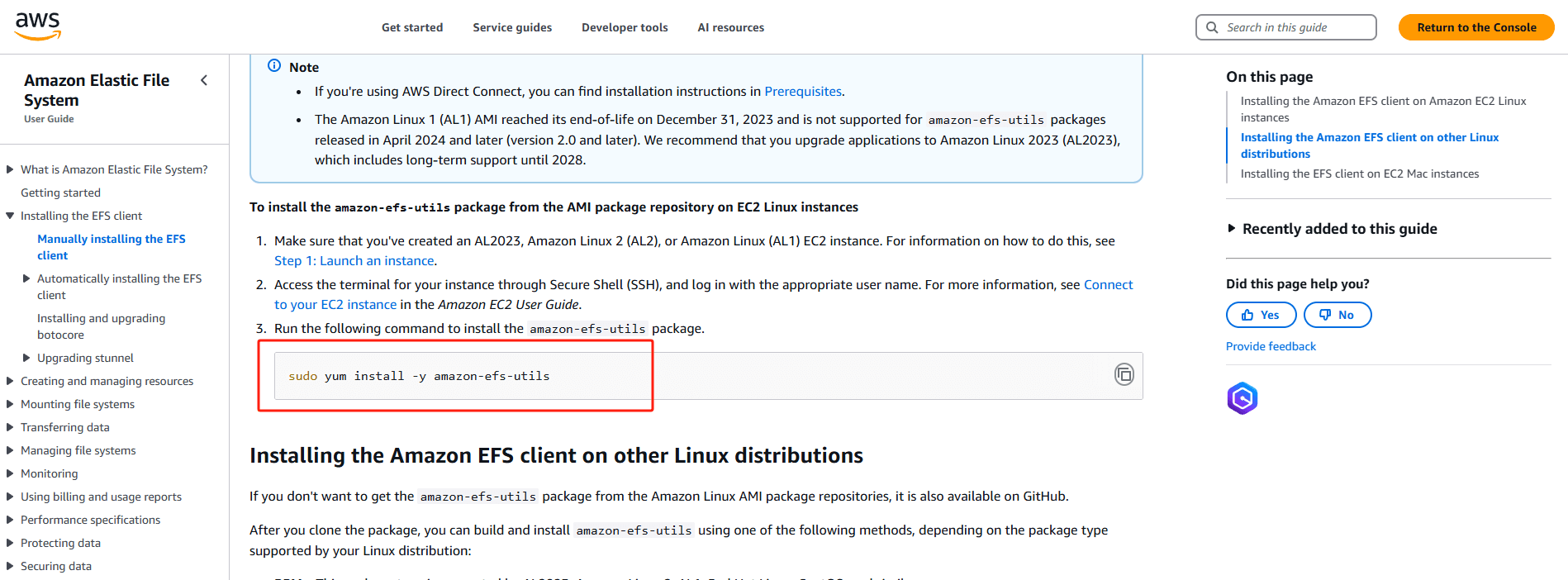
Install with the following:
sudo -s
yum install -y amazon-efs-utils
4. Create EFS directory
Use the following command to create a directory called "efs" to serve as the mount point for the file system:
mkdir efs
5. Execute the mount command
Copy the mount command, such as:
sudo mount -t nfs4 -o nfsvers=4.1,rsize=1048576,wsize=1048576,hard,timeo=600,retrans=2,noresvport [File System DNS Name]:/ efs
Run the mount command.
df -h
Repeat the same steps to mount the second EC2 instance.
Backup EC2 instance with Vinchin Backup & Recovery
To avoid problems during the process, it is best to back up your EC2 instance first. Vinchin Backup & Recovery supports AWS EC2 backups, allowing users to add instances with their AWS access key ID and configure full, incremental, or differential backups. It offers flexible recovery options, including entire instances, individual volumes, and specific files, with direct recovery to other virtualization platforms. Integrating with Amazon S3 for secure archiving, it also enables V2V migrations to platforms like VMware, Hyper-V, and Proxmox. The user-friendly interface simplifies backup management and configuration.
To backup EC2 instance with Vinchin Backup & Recovery, follow these steps:
1. Select the EC2 instance to be backed up.
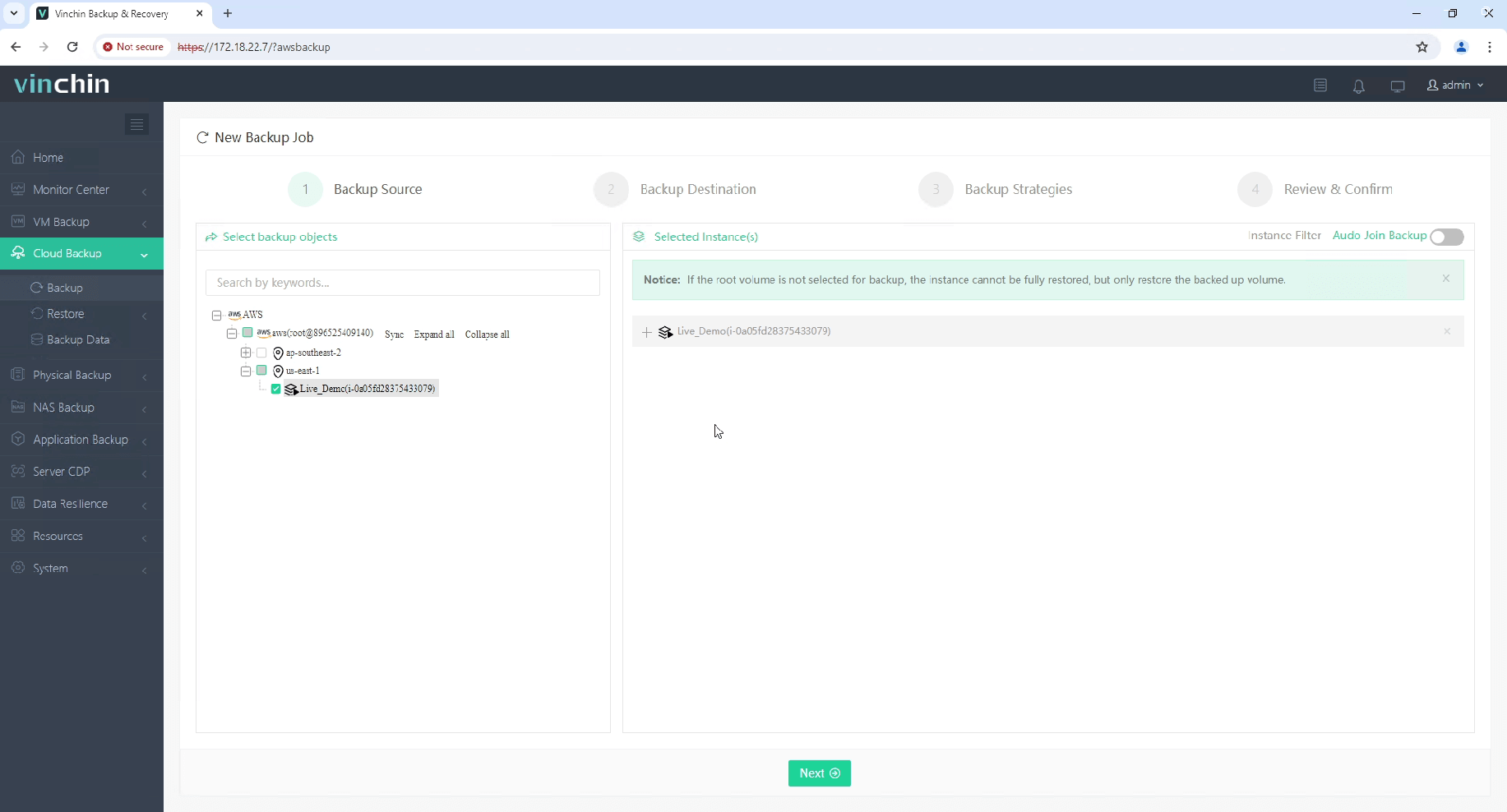
2. Select the backup destination.

3. Configure the backup strategies.
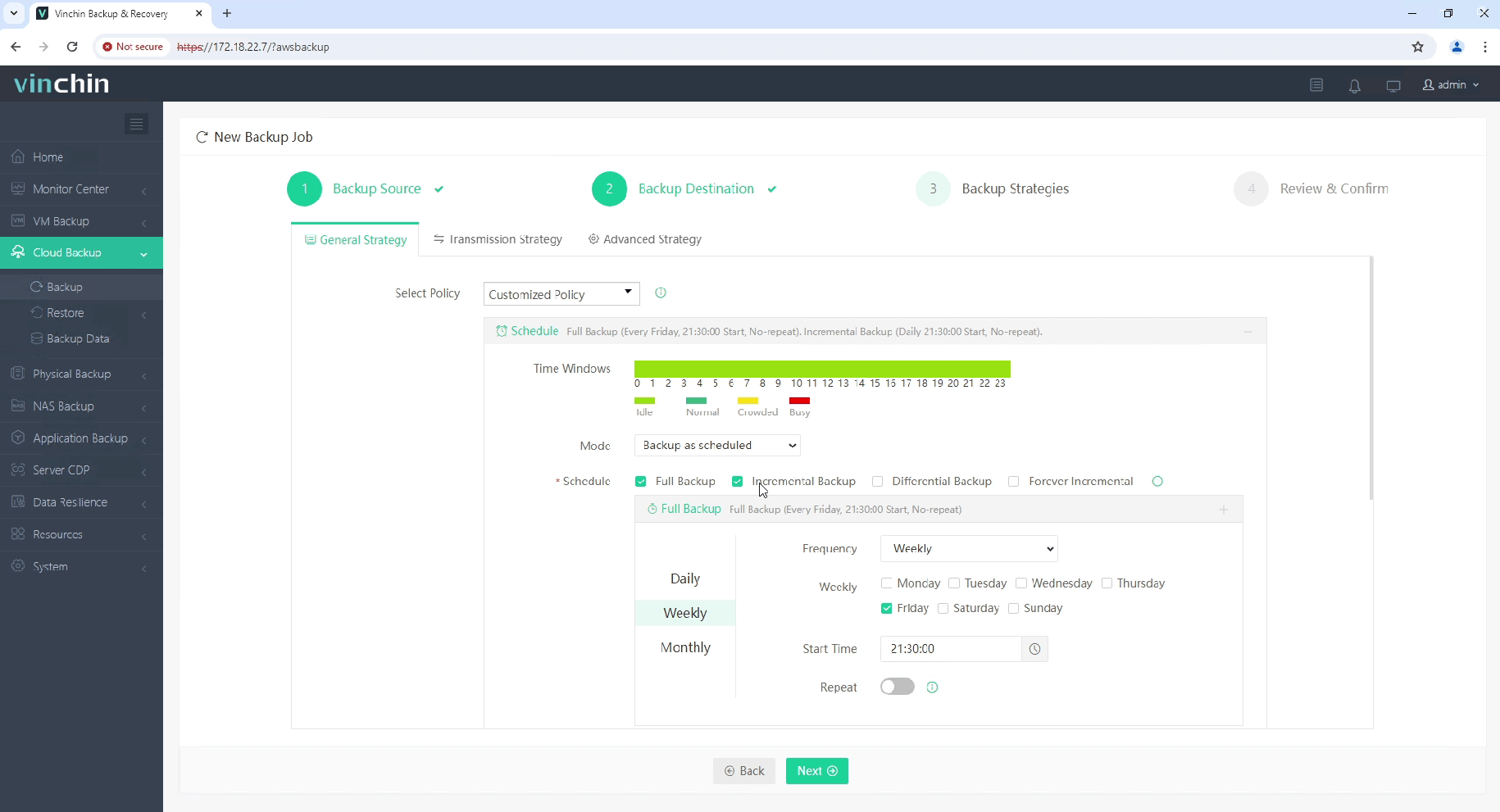
4. Review and submit the job.
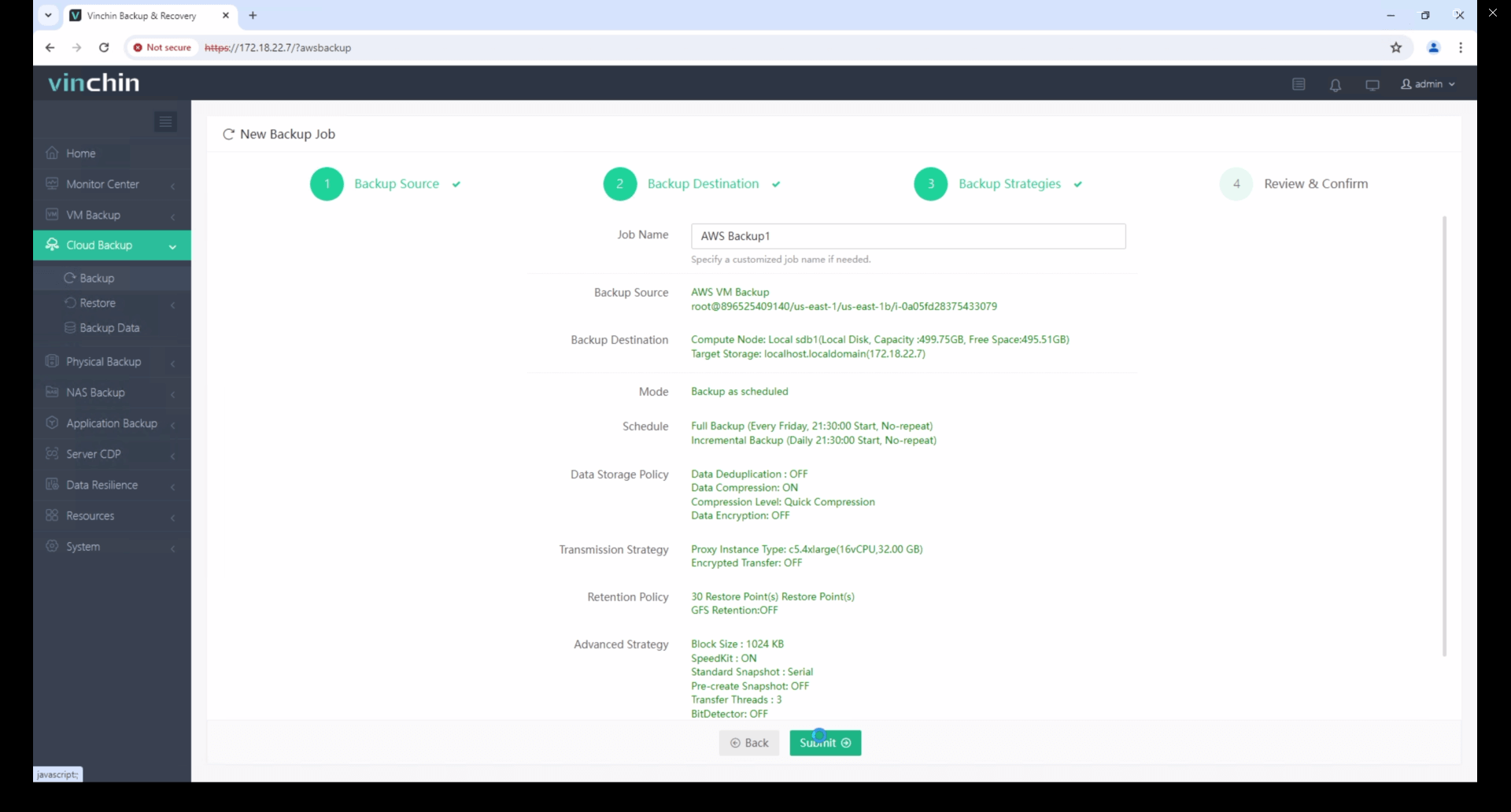
Start your 60-day free trial of Vinchin Backup & Recovery to experience its secure, resource-efficient backup solutions. Or, contact us for a customized plan tailored to your IT needs.
AWS EFS FAQs
1. What are the storage classes in EFS?
EFS Standard: High-performance storage for frequently accessed files.
EFS Infrequent Access (IA): Lower-cost storage for infrequently accessed files (automatically transitioned by Lifecycle Management).
2. How is EFS different from Amazon EBS or S3?
EFS: Shared, POSIX-compliant file system for multiple EC2 instances.
EBS: Block storage for a single EC2 instance.
S3: Object storage for massive scale and durability, not POSIX-compliant.
Conclusion
Although Amazon EFS is a powerful tool, like many other self-configured services, it still requires you to optimize it regularly. To avoid unnecessary overhead, you should monitor EFS burst credits and average I/O throughput periodically. At the same time, to ensure optimal performance, you can use asynchronous write operations and avoid running applications directly on EFS. In addition, to prevent extra charges, you need to manage various backups carefully and select the correct performance mode for your application workloads. Finally, you can improve overall performance by using concurrent connections.
Share on:


